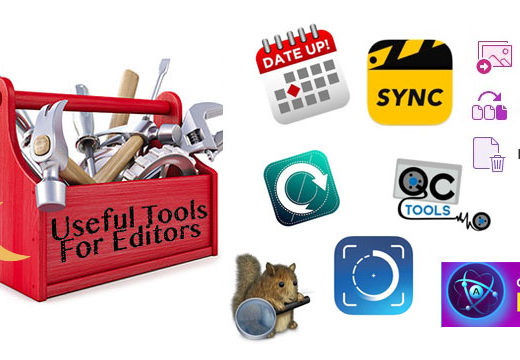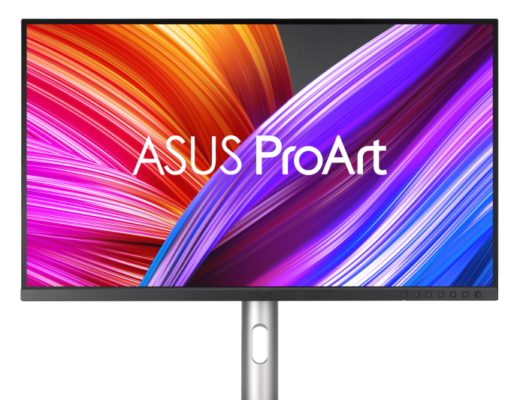
Editor’s Note: “28 Weeks of Post Audio” originally ran over the course of 28 weeks starting in November of 2016. Given the renewed focus on the importance of audio for productions of all types, PVC has decided to republish it as a daily series this month along with a new entry from Woody at the end. You can check out the entire series here, and also use the #MixingMondays hashtag to send us feedback about some brand new audio content.
Audio has been a huge part of my career. However, I have been involved in many aspects of production and post production over the years. I’ve also spent a good part of my life working professionally in live theatre. In fact, I spent a good part of my early adulthood involved in theatre and in theatre workshop groups. The first one that I joined, the Theatre Artists Workshop, located in Norwalk, CT, was a wonderful opportunity to learn how to properly present, showcase and critique works-in-progress. In this setting I had a unique chance to learn from older, more experienced professionals as they experimented, reworked material and offered comments to each other to help in the “process” of their project’s birthing pains and growth.
Everyone in our business has projects where they need to seek a bit of advice or comments from a friend or colleague. Unfortunately, most of the people that you are seeking consultation from have a limited understanding on how to specifically help you and your project, whatever stage of development it is in. Typically when asking others about our work, we are seeking “constructive” critique. Hearing, “I didn’t like it”, “it dragged” or “I don’t care for the story” probably will not help you better shape the specific goals or needs of the project. This can realistically only be offered within the context of a few guidelines. The clearer and more straightforward those guidelines are, the better the discussion on understanding their viewpoint and perspective.
 First and most importantly you must be clear about what advice you are seeking from your test audience. It’s perfectly fine to say to those from whom you seek advice – “tell me whatever you think – it’s fair game…” Know however that if you do that, then you should be prepared to hear all sorts of things that you may not really be interested in hearing. It’s always better for everyone involved to have a few simple ground rules to focus their answers to be most useful for you. Opening the door to others’ opinions when you are still deep in a creative state on your work can be difficult. Always steer the thoughts to a constructive critique.
First and most importantly you must be clear about what advice you are seeking from your test audience. It’s perfectly fine to say to those from whom you seek advice – “tell me whatever you think – it’s fair game…” Know however that if you do that, then you should be prepared to hear all sorts of things that you may not really be interested in hearing. It’s always better for everyone involved to have a few simple ground rules to focus their answers to be most useful for you. Opening the door to others’ opinions when you are still deep in a creative state on your work can be difficult. Always steer the thoughts to a constructive critique.
Perhaps you have been struggling with the visual effects or the compositing, the sound design and music choices or placement, or the length and scope of the edit. However, if you are hearing instead that the costumes don’t look good or that the make-up effects are not credible, then you are not getting the feedback you need to solve your most pressing problems. Those other things may have importance to your overall understanding of their impressions, but might not be immediately helpful if you want to hear about the sound design and they are discussing the color grading.
It is important to be clear about what items you’d like to hear about. The best practice is stating, prior to the review, exactly what you want your test audience to think about, and focus on, and then for them to offer comments on that. And only that.
 When we were workshopping theatre pieces, we had firm ground rules to discuss the specifics the presenter wanted. In this example, a scene would be presented to the group and afterwards the director would assemble onstage with a discussion moderator. The director would then relay exactly what aspects he or she was interested in hearing comments on. If, for example, they were working on the staging, blocking and movements, then the moderator would steer the comments to stick to those points only.
When we were workshopping theatre pieces, we had firm ground rules to discuss the specifics the presenter wanted. In this example, a scene would be presented to the group and afterwards the director would assemble onstage with a discussion moderator. The director would then relay exactly what aspects he or she was interested in hearing comments on. If, for example, they were working on the staging, blocking and movements, then the moderator would steer the comments to stick to those points only.
Why is this approach important? Since the collaboration and creation of these projects is so encompassing, and involving many techniques, skills and crafts, we generally work on one level or layer at a time. Often, breakthroughs in one area don’t happen until other areas are addressed and fixed. State clearly what the audience should be looking for and what you specifically want insights about. Don’t lose this wonderful opportunity of a fresh audience whose new perspective can help you on the things that matter most.
 Another key point about critique is that it is meant to be “constructive.” Perhaps you’ve been working hard on graphic elements and want feedback specific to that. If you haven’t set up some critique guidelines, what you might hear is “ I did not like it at all. I don’t think it looks good. It’s all hard to read.”
Another key point about critique is that it is meant to be “constructive.” Perhaps you’ve been working hard on graphic elements and want feedback specific to that. If you haven’t set up some critique guidelines, what you might hear is “ I did not like it at all. I don’t think it looks good. It’s all hard to read.”
Well that is certainly feedback specific to your needs, but not specific enough. In that case you must dig down for the thoughts to be helpful. Steer them into comments and ask questions that provide more detail like – “the font that you choose feels playful and not serious. It makes it seem less professional. The color choices don’t contrast enough and that, along with the size of the text, makes it difficult to read.” Those comments are specific, particular to your choices, and offer a deeper insight into the reaction of the commenter.
Encourage that level of specifics and detail when seeking opinion on your progressing work. I once actually stopped working on a project completely because I was told that it was silly and not worth finishing. This was from an individual that I held in high regard and was crushed by the comments. After that I just walked away from the project. A year later, I went back to have a peek at the unfinished work, and found that the material actually was good, the approach was right and perhaps that particular person, was expecting something else, or was just having a bad day and took it out on me at that moment. Of course the failing was all mine, by allowing those words to stop me in my tracks.
As creative artists and collaborators, we need to understand what audiences are taking away from our work. When the work, is still a work in progress, make the most of your test viewer’s experience and narrow the focus to your specific needs at that specific time.
This series, 28 Weeks of Audio, is dedicated to discussing various aspects of post production audio using the hashtag #MixingMondays. You can check out the entire series here.
Woody Woodhall is a supervising sound editor and rerecording mixer and a Founder of Los Angeles Post Production Group. You can follow him on twitter at @Woody_Woodhall
![]()

Filmtools
Filmmakers go-to destination for pre-production, production & post production equipment!
Shop Now


















